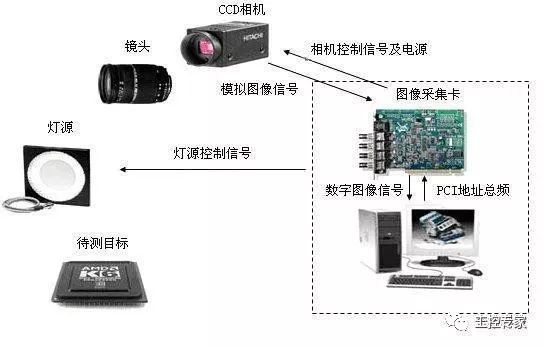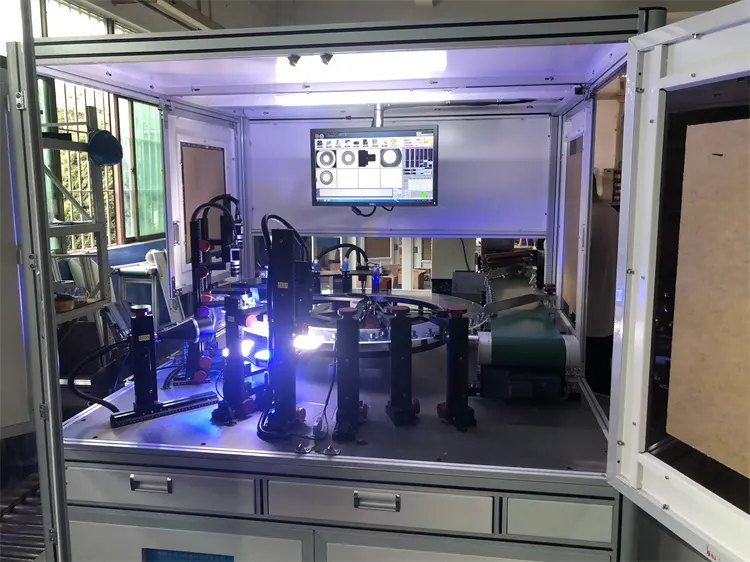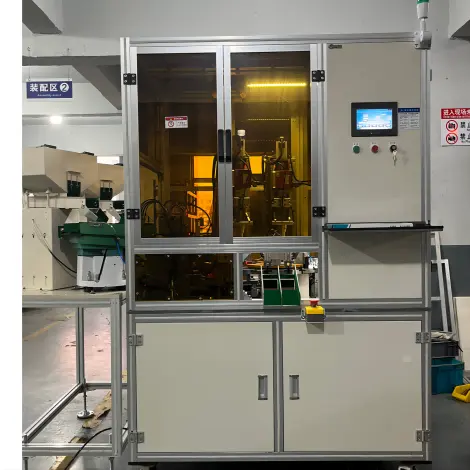Application and advantages of visual inspection technology
1.Visual inspection system
Visual inspection system refers to the use of machines to replace human eyes to make various measurements and judgments. Machine vision is a very important research field in the fields of engineering and science. It is a comprehensive discipline involving optics, mechanics, computers, pattern recognition, image processing, artificial intelligence, signal processing, optoelectronic integration and other fields. Its application scope has gradually improved and promoted with the development of industrial automation. Among them, the rapid development of technologies such as mother-child image sensors, CMOS and CCD cameras, DSP, ARM embedded technology, image processing and pattern recognition has strongly promoted the development of machine vision. Machine vision is a relatively complex system. Because most of the system monitoring objects are moving objects, the matching and coordinated actions of the system and the moving objects are particularly important, so strict requirements are imposed on the action time and processing speed of each part of the system. In some application fields, such as robots, flying objects, etc., there are strict requirements on the weight, volume and power consumption of the entire system or part of the system.
The composition and working process of the machine visual inspection
A complete machine visual inspection system includes: lighting source, optical lens, CCD camera, image acquisition card, image detection software, monitor, communication unit, etc.

2.The working process of the industrial machine vision system is mainly as follows:
a. When the sensor detects that the object to be detected is moving close to the shooting center of the camera, it sends a trigger pulse to the image acquisition card;
b. The image acquisition card sends the start pulse to the lighting system and the camera respectively according to the set program and delay;
c. A start pulse is sent to the camera, the camera ends the current shooting and restarts a new one, or the camera is in a waiting state before the start pulse arrives, and starts after detecting the start pulse. Before starting a new shot, the camera turns on the exposure component (the exposure time is set in advance); another start pulse is sent to the light source, and the light source opening time needs to match the camera exposure time; the camera scans and outputs an image;
d. The image acquisition card receives the signal and digitizes the analog signal through A/D conversion, or directly receives the digital video data after the camera digitizes it;
e. The image acquisition card stores the digital image in the computer’s memory;
f. The computer processes, analyzes and identifies the image to obtain the detection result;
g. The processing result controls the action of the assembly line, performs positioning, corrects motion errors, etc.
3. Visual inspection Related Technologies
A. Image acquisition technology – the basis of machine vision. The image acquisition part is generally composed of light source, lens, digital camera and image acquisition card. The acquisition process can be simply described as under the condition of light source, the digital camera shoots the target object and converts it into image signal, and finally transmits it to the image processing part through the image acquisition card. When designing the image acquisition part, many aspects should be considered, mainly about digital camera, image acquisition card and light source.
a. Light source lighting Lighting is an important factor affecting the input of the machine vision system, which directly affects the quality of the input data and the application effect. So far, there is no machine vision lighting equipment that can be used in all applications. Therefore, in practical applications, it is necessary to select the corresponding lighting equipment according to the application to meet specific needs. The lighting system can be divided into: backlighting, front lighting, structured light and stroboscopic lighting according to its illumination method. Among them, backlighting refers to placing the object to be measured between the light source and the camera to improve the contrast of the image. Forward lighting is that the light source and the camera are located on the same side of the object to be measured, and its advantage is that it is easy to install. Structured light illumination is to project a grating or line light source onto the object to be measured, and demodulate the three-dimensional information of the object to be measured based on the distortion it produces. Stroboscopic lighting is to irradiate a high-frequency light pulse onto the object. The camera shooting requirements are the same as the light source.
b. Optical camera The task of the optical camera is to perform optical imaging. Generally, in the field of measurement, there are special camera lenses used for measurement because they play a key role in image quality. One problem that the camera needs to pay attention to is distortion. This requires the use of corresponding distortion correction methods. Currently, many automatic distortion correction systems have been developed.
c. CCD camera and image acquisition card CCD (Charge Coupled Device) camera and image acquisition card jointly complete the acquisition and digitization of the target image. At present, the application technology of solid devices such as CCD and CMOS, linear array pattern sensitive devices, pixel size is constantly decreasing, the number of array pixels is constantly increasing, and the pixel charge transfer rate is also greatly improved. In the PC-based machine vision system, the image acquisition card is an important device that controls the camera to take pictures to complete the image acquisition and digitization, and coordinates the entire system. The image acquisition card directly determines the interface of the camera: black and white, color, analog, digital, etc.
B. Image processing and analysis-the core of machine vision The core of the image processing and analysis method used in machine vision is to solve the problem of target detection and recognition. When the target to be recognized is relatively complex, it is necessary to go through several links and achieve it from different aspects. When identifying and extracting the target, the first thing to consider is how to automatically separate the target from the background. The complexity of target extraction generally lies in the fact that the characteristics of the target and non-target objects are not very different. After determining the target extraction plan, the target characteristics need to be enhanced. With the development of computer technology, microelectronics technology and large-scale integrated circuits, image information processing is increasingly done with the help of hardware, such as DSP chips, dedicated image signal processing cards, etc. The software part is mainly used to complete the immature and complex parts of the algorithm or the parts that need to be continuously improved. This improves the real-time performance of the system while reducing the complexity of the system.

3. Applications and Advantages of visual inspection
Advantages
Cost-Effective: Requires minimal equipment and training.
Quick: Can rapidly identify visible issues.
Non-Destructive: Does not alter the state of the item being inspected.
Applications
Manufacturing: Inspecting products for defects before shipping.
Construction: Evaluating the integrity of structures during and after building.
Transportation: Checking vehicle safety features and conditions.



